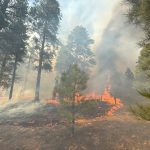
Missing, murdered cases face jurisdictional issues
PHOENIX
She was covered in a pink blanket when she took her last breaths.
By the time the body of 29-year-old Tasha Lewis was found, who was reported missing three days earlier, it was too late.

Sylvia Clifford from Shiprock puts her hand on a mural that represents missing and murdered Indigenous women last Thursday in Phoenix. Clifford said the body of her daughter, Crystal de Antone, was found in 2012.
According to an April 1 police report by a Crownpoint Police District officer, Lewis’s body was found in a “prone position” and had “no pulse.”
Lewis, the police report stated, had been reported missing on March 28. A day before she was found, Navajo Police had searched for Lewis along with her family, including her older sister, Angie Peshlakai, who is from Fort Defiance.
The police concluded Lewis’s death was accidental and noted that she had allegedly fallen from the top of one of mesas in Thoreau.
Peshlakai said that it could not be accidental because the neighbors heard “yelling and screaming in the Mesa area” on March 27, the day before Lewis was reported missing.
Lewis’s body was found under a tree that had no broken branches, which to Peshlakai, was another indication it could not have been accidental.
In addition, the report stated Peshlakai told police that witnesses had told her Lewis’s boyfriend allegedly drove her car to Dalton Pass, which is located about 39 miles northwest of Thoreau.
The boyfriend and a relative of Lewis, the police report stated, then drove back to Thoreau to search for Lewis, where she allegedly exited her car and “walked off after having an argument with” her boyfriend.
Lewis’s case was handed over to the Navajo Department of Criminal Investigations. The FBI was called and concluded the Rehoboth-McKinley Christian Hospital housekeeper’s death was accidental.
“My sister is the type of girl that calls my mom every day,” Peshlakai said. “No matter what, she calls my mom, my dad. You know, even she’s one of those visits, you know, if no phone call.”
Convinced death not accidental
Peshlakai said her mother, identified in the police report as Veronica Begay, said it was not like Tasha not call her or her father. So she went to her work to check if she was there. She was not.
Peshlakai is convinced her sister’s death was not accidental and police need to continue investigating her case because of all the suspicious circumstances surrounding her disappearance.
To date, Peshlakai said she is not sure what is happening because criminal investigations and the FBI tell her the other law enforcement agency has her case.
Lewis was laid to rest on April 9. Her family said they would be participating in the National Day of Awareness for Missing and Murdered Native Women and Girls, which was held throughout the country on Wednesday.
The FBI, according to Jill McCabe, who is public affairs specialist for the FBI Phoenix Field Office, works local, state, federal and tribal officials.
“The FBI has investigative responsibility for federal crimes committed on about 200 Indian reservations nationwide,” Agent McCabe wrote in an email. “We share our federal jurisdiction with the Office of Justice Services of the Bureau of Indian Affairs.”
Federal agencies, including the FBI, handle serious crimes, including murder, child sexual and physical abuse, violent assaults, kidnappings, drug offenses, public corruption and financial crimes, McCabe explained.
McCabe sent three current cases the FBI is continuing to investigate: Jamie L. Yazzie, from Pinon, Arizona, who was last seen on June 30, 2019; Caldwell D. Smith, from Shonto, Arizona, who was murdered on Sept. 15, 2013; and Matthew and Philip Reagan, the Cleveland brothers who were murdered on March 21, 2020.
“The FBI is committed to fulfilling our mandate to investigate the most serious crimes in Indian Country,” she wrote.
Arizona State Rep. Jennifer Jermaine, who is a member of the White Earth Ojibwe Tribe, understands all too well what families experience when a loved one goes missing.
She said her family lost a loved one and took “decades” to find “his body.”
Study committee established
Jermaine, along with Rep. Victoria Steele, co-sponsored House Bill 2570, which established a 21-member study committee on missing and murdered Indigenous women and girls. Arizona Gov. Doug Ducey signed the bill into law in August 2019.
“We’ve come a long way in the last two years,” Jermaine said, “as far as awareness, and movement with reforming how law enforcement approaches MMIW (Missing Murdered Indigenous Women).
“We do have a bill that is on its final steps in the state Legislature to completely reform how Arizona reports and tracks missing children,” she said.
Jermaine said the reform would make it easier for tribes to interface with the state of Arizona, as well as require all missing children to go into federal databases.
“So that when people cross jurisdictional lines, other law enforcement agencies can help them for missing children, which was something that we found in our study committee to be a big issue,” she said.
The issue, Jermaine explained, was tribes not having access to state databases. She also said that jurisdiction was another issue the study committee highlighted.
“We can do a lot by building a cooperative task force, multi-agency task force,” Jermaine said.
Valaura Imus-Nahsonhoya, with Honwungsi Consulting, and Paula Flores, with the Salt River Pima Maricopa Indian Community family advocacy, told the committee there was a difference in how tribal and federal authorities responded to crime in Indian Country.
Imus-Nahsonhoya and Flores said when a crime is committed in Indian Country, tribal, state, BIA and county law enforcement would initially respond.
If the crime was a serious crime like what McCabe highlighted, the FBI would also respond.
Multi-faceted problem
According to a November 2020 study conducted by the Tucson-based LeCroy &Milligan Associates Inc., in cooperation with the Arizona Attorney General’s office, addressing missing and murdered cases on Indian country is “complex, multi-faceted problem that, by necessity, involves multiple jurisdictions.”
Through the study, the Arizona MMIP Study Committee assessed the jurisdictional problem. They identified issues leading to cold cases, to missed opportunities to act quickly and rescue people, and to systemic problems with access to victim services.
Jermaine said the Salt River Pima-Maricopa have a group called the East Valley Crisis Response Team, led by Chief of the Salt River Pima-Maricopa Police Department Karl Auerbach, that has a good success rate in finding missing people.
“We’ve got a model that we can work off of, to build the cross-agency multi-jurisdictional task forces to really focus on finding our missing people before the worst happens,” Jermaine said.
For Peshlakai, who has been asking the Crownpoint Navajo Police District, Navajo Criminal Investigations, and the FBI to continue investigating her sister’s death, she hopes it does not become another statistic.
For the past three years, Lorena Halwood, executive director of Amá Dóó Á?chíní Bíghan Inc., said the nonprofit, which is based in Chinle, has handled 814 cases related to domestic, verbal and sexual abuse, from 2018 through 2020.
Nationally, the Arizona Missing Murdered Indigenous People Study Committee stated in their 514-page report, more than 4 in 5 American Indian and Alaskan Native Women, or 84%, have experienced violence in their lifetime.
Overall, more than 1.5 million American Indian and Alaska Native women have experienced violence in their lifetime. More than 1 in 3 have experienced violence in the past year.
Roxanne Pergeson, victims services manager with the Navajo County Prosecutor’s Office in Holbrook, said their office handled a total of 673 cases of domestic related issues just in Navajo County alone, in the last two years.
Prevention is key
Halwood said tackling MMIW was not just about addressing the criminal aspect but was also about how to prevent it in the first place.
“How do we stop the abuse? It’s through prevention to these young children,” Halwood said. “I know there was a prevention program, what was it called, GREAT (Gang Resistance Education and Training), or DARE (Drug Abuse Resistance Education).
“I know police officers used to go to the schools,” she said. “And that was so great. Now all those things have gone away.”
She was not sure why the programs went away on the Navajo Nation, but assumed funding was a factor.
She added that instructors from the Navajo Nation Police Academy took police cadets to her office where they would be asked how they would handle a domestic violence situation.
“And we would ask the cadet, ‘What would you do if this happened?’” Halwood said.
A concern she had was how seasoned police officers downplayed domestic violence calls to rookie police officers.
She said she would ask how a cadet might handle it if a senior police officer downplayed a domestic abuse call.
“When they get a call, a training officer might say, ‘Oh, it’s the same family again. It’s the same couple again. You’re going to be going over here to this family maybe every week.’ How are you gonna handle that as a new police officer?” Halwood said.
On May 4, President Joe Biden issued a proclamation that stated the federal government’s failure to allocate the necessary resources “demeaned the dignity and humanity of each person who goes missing or is murdered.”
“Today, thousands of unsolved cases of missing and murdered Native Americans continue to cry out for justice and healing,” Biden stated.
Anyone with information that could lead the arrest of the person, or persons, related to Jamie L. Yazzie from Pinon, Caldwell D. Smith from Shonto, and Matthew and Philip Reagan from Cleveland, Ohio, cases, can submit a tip to the FBI’s Phoenix Field Office at 623-466-1999, or tips.fbi.gov.



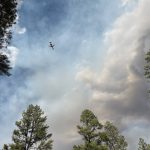
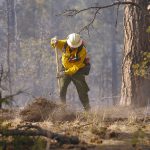
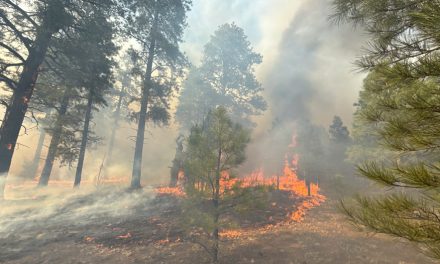
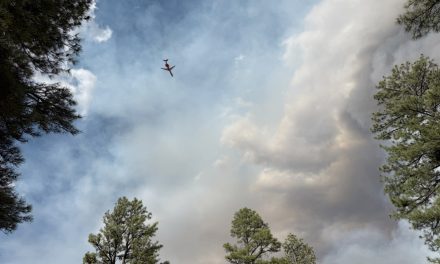



 Highway 264,
Highway 264, I-40, WB @ Winslow
I-40, WB @ Winslow